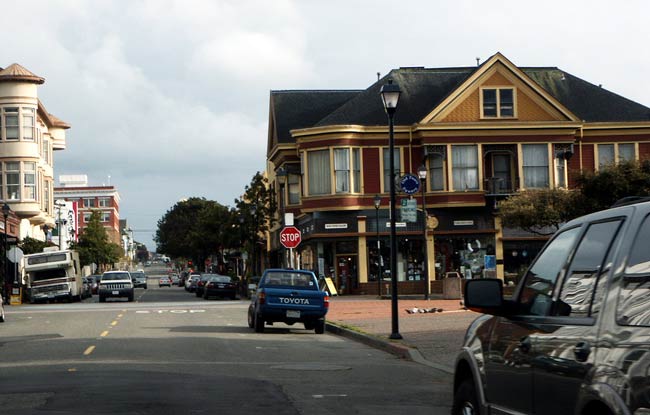
August 2, 2018; North Coast Journal
Even in a liberal Californian enclave, known in part for the farming of cannabis, needle exchanges are controversial. The North Coast Journal recently covered a moral and political debate over needles that has ensnared the Eureka city council, a nonprofit responding to the addiction crisis, and the local community.
As reporter Thadeus Greenson writes, some city council members are questioning the Humboldt County Area Center for Harm Reduction’s (HCAHR) strategy’s effectiveness and threatening suspension of the organization’s needle exchange program for injection drug users. Greenson writes,
HACHR has become a flashpoint in Eureka, a fact that was on clear display at the July 17 city council meeting, during which a couple of dozen members of the public stepped to the podium to either voice support for the harm reduction program, saying it does good work and saves lives in the face of a growing drug epidemic, or malign it, saying it does little more than enable addicts who leave the city littered with used syringes.
The nonprofit, founded in 2014, has been working to address the “absurdly disproportionate numbers of Hepatitis C Virus (HCV) and drug related deaths in Humboldt County”—the county has the highest HCV rate in California—and uses the principles of harm reduction to carry out its mission, according to its website. The center also responded to four new cases of HIV in just the last six months.
Although the Humboldt County area has faced increasing numbers of opioid-related overdoses and deaths in recent years—similar to many other areas of the country—systemic issues ranging from homelessness to amphetamine abuse, not to mention an at-risk transient population of workers associated with the infamous cannabis farms, are also at work.
The organization outlined its approach to needle exchanges in its 2018 annual report:
The real danger associated with syringes is when people who need them don’t have access to them. As we watch our HCV rates continue to skyrocket we are seeing other related issues develop. We have been warning what punitive, restrictive measures would create, and now we are here.
But critics have argued that the program enables addicts and litters the rural community with discarded needles. There’s even a #TakeBackEureka grassroots group that was organized to stop crime and public drug use, and tactics have included protesting HACHR.
Sign up for our free newsletters
Subscribe to NPQ's newsletters to have our top stories delivered directly to your inbox.
By signing up, you agree to our privacy policy and terms of use, and to receive messages from NPQ and our partners.
The organization’s staff and supporters say the nonprofit was founded to combat an existing epidemic and shouldn’t be cast as a scapegoat for the area’s challenges.
As NPQ has reported, “harm reduction” strategies such as needle exchanges and safe injection sites are getting a fresh look as the opioid epidemic rages.
Harm reduction “calls for the non-judgmental, non-coercive provision of services and resources to people who use drugs, and the communities in which they live, in order to assist them in reducing harm…Harm reduction is the life that happens between prevention of drugs and drug treatment,” according to the Harm Reduction Coalition.
Supporters hope harm reduction services will connect people with substance abuse disorders to outreach workers and increase access to recovery services, in addition to reducing infections.
Congress prohibited funding for exchanges until early 2016, despite significant evidence that the programs reduce the spread of certain viral infections, saving lives and money for taxpayers. The big caveat is that funds still can’t be used on syringes, effectively downshifting the cost to states and local nonprofits.
A Stateline report in February found that at least a dozen states have legalized syringe exchanges since 2016, and five more Republican-led states were considering similar legislation this year.
By the numbers, the Humboldt Center is meeting its goals, as Greenson reported:
“[T]he program distributed 735,823 new syringes in 2017 and took back 688,390 used ones for a return rate of roughly 93.5 percent—about 3.5 percent higher than the industry standard. Additionally, the group reported that it referred 189 people to drug treatment services and distributed more than 2,700 Naloxone opioid overdose reversal kits, resulting in 185 self-reported reversals from clients.”
Communities that care about social justice should embrace science and sometimes seemingly counterintuitive ideas. Mental and behavioral health issues plagued our country long before needles.—Anna Berry












